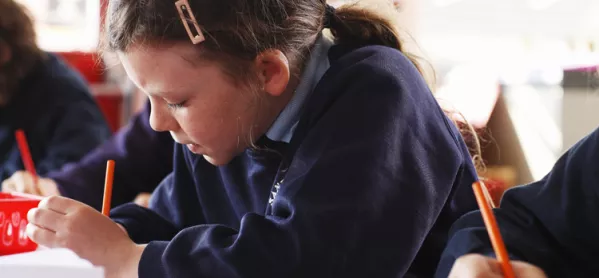The testing effect is one of the most fascinating findings in educational research. We are accustomed to thinking of tests as something you do to provide other people with information about your performance. But the research shows that tests can actually have a learning benefit, too.
In a test, you are often trying to recall information from memory, and the very act of trying to recall a fact helps to strengthen your memory of it. So this kind of retrieval practice is actually a good way to learn something, and is the reason why revising with flashcards or quizzing is better than just rereading or highlighting the material you need to learn.
But one criticism of the testing effect is that, while fine for acquiring basic facts, it isn’t that helpful for applying those facts. For example, it’s clear that filling in times-tables grids will help to solidify the memory of the times tables themselves. But what about if your aim is for pupils to apply such knowledge in more of a real-world situation? Does the testing effect help then?
Study or test
A study from 2010 [1] explored this exact question. Pupils aged 9-11 were set the task of learning the names of places on a map. To begin with, they were shown the map with the labelled regions they had to learn, and then they had to revise this information.
One group of pupils revised by studying: they got to see the names of the regions appear on screen for seven seconds at a time, and were able to label them on a blank map they’d been given. The second group revised by testing: they were given five seconds to identify where a particular region belonged on their blank map, before seeing the answer for two seconds.
Both groups were then given a final test where they had to fill in the names of the regions they’d learnt on a blank map. The group who learnt through testing did much better than the group who learnt through studying. That’s what the testing effect would predict, but of course this final test was quite straightforward and very similar to the way that the children in the testing group had revised.
How would those children perform when asked to solve more complex questions that were related to the real world and not exactly the same as the ones they had revised?
These types of question made up the next test the pupils took, questions such as: “If you drive from Ross to Boyd along the shortest possible path, which city do you drive through?” These questions were new to both groups. But again, the group who revised by testing did better than the group who revised by studying.
In fact, the gap between the two groups was even larger in this test than the first one. The conclusion of the study’s authors was that testing can help with the retrieval of basic facts, but it can also help pupils to transfer those facts to more complex tasks.
Knowledge acquired through the testing effect can be applied flexibly in new situations, and testing supports rather than drives out understanding.
Daisy Christodoulou is director of education at No More Marking, and the author of Making Good Progress? and Seven Myths About Education. She tweets @daisychristo
[1] Rohrer, D, Taylor, K and Sholar, B (2010) "Tests Enhance the Transfer of Learning", Journal of Experimental Psychology: Learning, Memory, and Cognition, 1/36: 233-239





